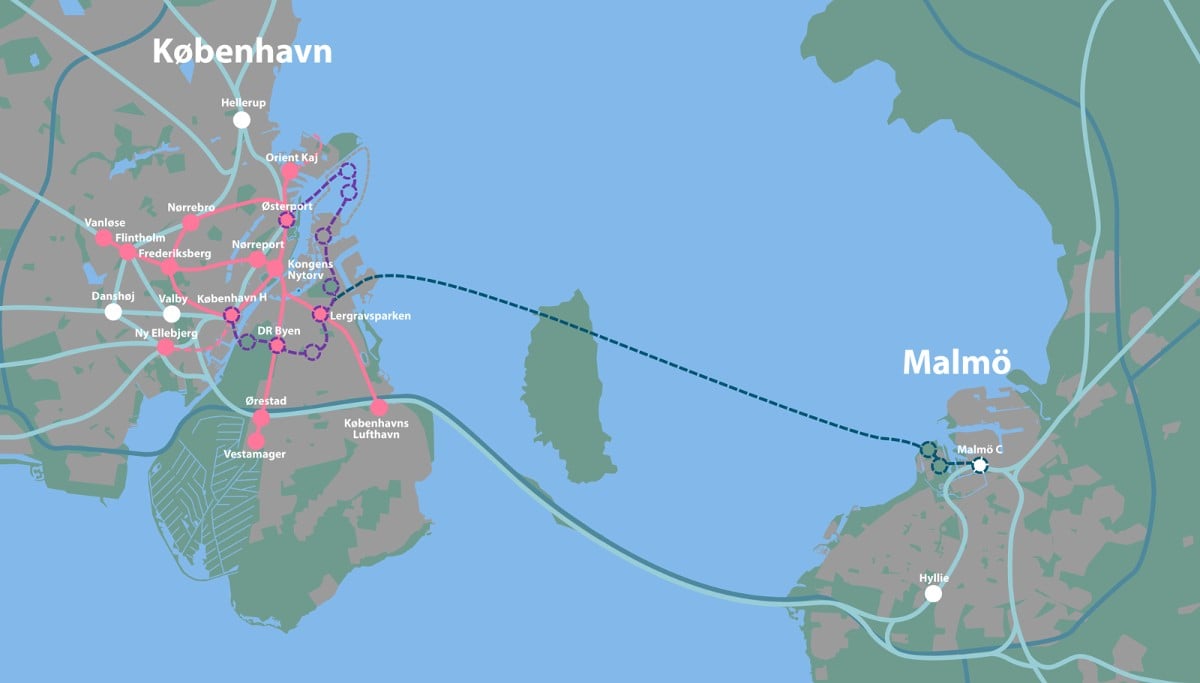BORDERS
‘Landlocked’ in the EU: Are you affected by loss of onward freedom of movement?
The UK government's decision to end freedom of movement does not just hit Brits in the UK, but also those living around the EU who may need or simply want to move to another EU country in future. Please tell us if you are affected.

For members
TRAVEL NEWS
Here’s where Malmö plans to place its first three Copenhagen Metro stops
Politicians in the Swedish city of Malmö have decided where the first three stops will be if a new Öresund Metro is built, linking the city to the Danish capital - and they are planning on using the earth excavated to build a whole new city district.

Malmö and Copenhagen have been pushing for an Öresund Metro linking the two cities since at least 2011, but so far neither the Swedish government nor the Danish one have committed to stumping up their share of the roughly 30 billion Danish kroner (47 billion Swedish kronor, €4 billion) required.
Malmö hopes the Swedish government will take a decision on the project this autumn, and in preparation, the city’s planning board last Thursday took a decision on where the first three stops of the Öresund Metro should be placed.
They have selected Fullriggaren (currently a bus stop at the outermost tip of the city’s Västra Hamnen district), Stora Varvsgatan, in the centre of Västra Hamnen, and Malmö’s Central Station, as the first three stops, after which the idea is to extend the metro into the city.
Stefana Hoti, the Green Party councillor who chairs the planning committee, said that the new Fehmarn Belt connection between the Danish island of Lolland and Germany, which is expected to come into use in 2029, will increase the number of freight trains travelling through Copenhagen into Sweden making it necessary to build a new route for passengers.
Part of the cost, she said, could come from tolls levied on car and rail traffic over the existing Öresund Bridge, which will soon no longer need to be used to pay off loans taken to build the bridge more than 20 years ago.
“The bridge will be paid off in the near future. Then the tolls can be used to finance infrastructure that strengthens the entire country and creates space for more freight trains on the bridge,” Hoti told the Sydsvenskan newspaper.
After Fullriggaren the next stop would be at Lergravsparken in the Amagerbro neighbourhood, which connects with the current M2 line, after which the there will be four new stops on the way to Copenhagen Central, including DR Byen on the current M1 line.
The hope is that the Öresund Metro will reduce the journey time between Copenhagen Central and Malmö Central from 40 minutes to 25 minutes.

But that’s not all. Excavating a tunnel between Malmö and Copenhagen will produce large amounts of earth, which the architect firm Arkitema has proposed should be used to extend Malmö’s Västra Hamnen district out into the sea, creating a new coastal district called Galeonen, meaning “The Galleon”, centred on the Fullriggaren Metro stop.
This project is similar to the Lynetteholm project in Copenhagen, which will use earth excavated for the Copenhagen Metro extension to build a peninsular in front of Copenhagen Harbour, providing housing and protecting the city from rising sea levels.
Rather than producing a sea wall to protect the new area from rising sea levels, Arkitema and its partner, the Danish engineering firm COWI, have proposed a new coastal wetland area.

 Please whitelist us to continue reading.
Please whitelist us to continue reading.
Member comments